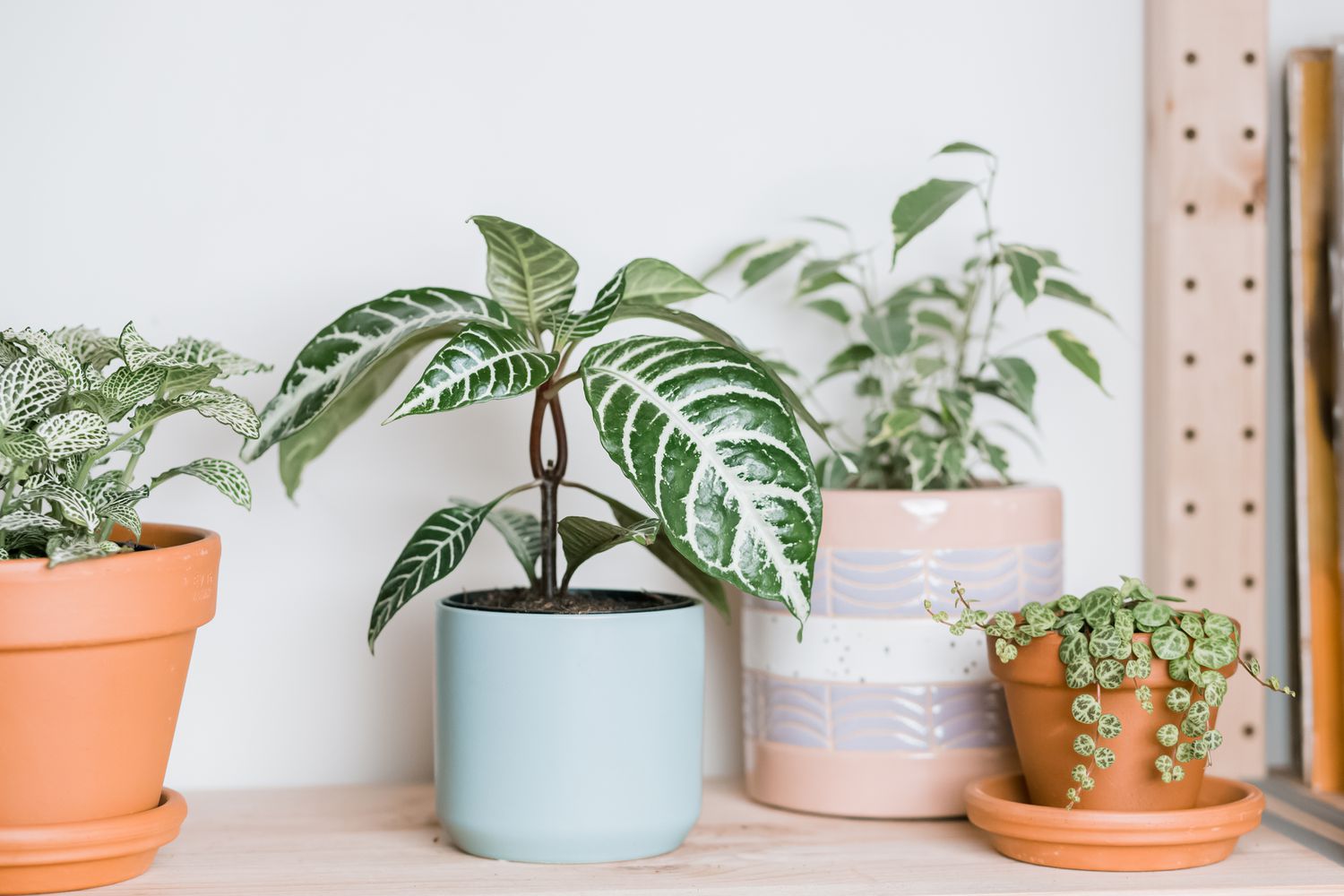
The Zebra Plant (Aphelandra squarrosa) is a fascinating and visually striking houseplant that is sure to capture the attention of any plant enthusiast. With its distinctive foliage and vibrant yellow flowers, this plant has become a popular choice for indoor gardens and adds a touch of exotic beauty to any space.
But there’s more to the Zebra Plant than meets the eye. In this article, we will explore 18 unbelievable facts about this unique plant, from its origins and care requirements to its fascinating behavior and medicinal properties. Whether you’re a seasoned plant lover or just starting your green thumb journey, these facts will surely pique your interest and deepen your appreciation for the Zebra Plant.
Key Takeaways:
- The Zebra Plant, with its zebra-like patterns and air-purifying qualities, adds elegance and charm to any space. It’s a low-maintenance, pet-friendly plant that thrives in shaded areas and exhibits fascinating natural movements.
- Whether indoors or in tropical gardens, the Zebra Plant’s unique foliage and vibrant purple flowers make it a prized decorative addition. Its care requirements are specific, but its beauty and air-purifying properties are truly worth it!
The Zebra Plant Has Striking Zebra-like Patterns on Its Leaves
One of the most fascinating features of the Zebra Plant is its unique foliage. The leaves display bold white stripes resembling zebra patterns, giving the plant its distinctive name.
The Zebra Plant Belongs to the Calathea Family
The Zebra Plant, scientifically known as Calathea zebrina, is a member of the Marantaceae family. It is native to Brazil and is commonly cultivated as a houseplant around the world.
It Thrives in Shaded Areas
The Zebra Plant prefers low to medium indirect light and thrives in shaded areas. This makes it an excellent choice for those looking to add greenery to rooms with limited natural light.
It Has Air-purifying Qualities
Like many other Calathea varieties, the Zebra Plant is known for its air-purifying properties. It helps to remove toxins and improve air quality, making it a great addition to any indoor space.
The Zebra Plant Requires Consistent Moisture
To keep the Zebra Plant healthy and thriving, it is essential to provide consistent moisture. The soil should be kept slightly moist but not overly saturated to prevent root rot.
It Exhibits Natural Rhythmic Movements
An intriguing characteristic of the Zebra Plant is its ability to exhibit natural rhythmic movements. Its leaves open and close in response to light and temperature changes, which adds to its appeal.
The Zebra Plant is Non-Toxic to Pets
If you are a pet owner, you can breathe easy knowing that the Zebra Plant is non-toxic to dogs, cats, and other common household pets. This makes it a safe choice for pet-friendly homes.
It Can Reach a Height of 2-3 Feet
When properly cared for, the Zebra Plant can grow to a height of 2-3 feet, making it a medium-sized indoor plant. Its upright growth habit adds an element of elegance to any space.
The Zebra Plant Prefers Humid Environments
Originating from tropical regions, the Zebra Plant thrives in humid environments. Providing sufficient humidity through regular misting or using a humidifier can help maintain its health and vibrancy.
It Produces Vibrant Purple Flowers
Although it is primarily cultivated for its striking foliage, the Zebra Plant occasionally produces vibrant purple flowers. These flowers, while small and short-lived, add a touch of color to the plant.
The Zebra Plant Has Medicinal Properties in Traditional Folklore
In traditional folklore, the Zebra Plant is believed to possess medicinal properties. It is used in herbal remedies for its purported ability to treat various ailments and improve overall well-being.
It Requires Regular Fertilization
To ensure optimal growth and foliage coloration, the Zebra Plant benefits from regular fertilization during the growing season. A balanced houseplant fertilizer applied every 4-6 weeks is recommended.
The Zebra Plant Requires a Well-Draining Potting Mix
Like most houseplants, the Zebra Plant needs a well-draining potting mix to prevent waterlogging and promote healthy root development. A mixture of peat moss, perlite, and potting soil is ideal.
It Exhibits a Nighttime Ritual Called “Praying Hands”
During the evening hours, the Zebra Plant undergoes a fascinating ritual known as “Praying Hands.” Its leaves fold upward as if in prayer, creating an enchanting sight.
The Zebra Plant Can Benefit from Regular Leaf Cleaning
Due to its unique leaf patterns, the Zebra Plant may accumulate dust over time. Regular leaf cleaning with a damp cloth or gentle spray of water helps to keep the foliage looking vibrant and fresh.
It Requires Protection from Direct Sunlight
The Zebra Plant should be shielded from direct sunlight as it can cause the leaves to fade and lose their vibrancy. Indirect or filtered light is the ideal lighting condition for this plant.
The Zebra Plant Is Highly Prized for its Decorative Appeal
With its eye-catching foliage, natural movements, and overall beauty, the Zebra Plant is highly prized for its decorative appeal. It adds a touch of elegance and intrigue to any indoor space.
It Makes a Great Addition to Tropical-themed Gardens
For those fortunate enough to live in tropical regions, the Zebra Plant is an excellent choice for adding to outdoor gardens. Its unique foliage complements other tropical plants, creating a lush and vibrant atmosphere.
As you can see, the Zebra Plant is truly fascinating with its striking zebra-like patterns, air-purifying qualities, and unique behaviors. Whether grown indoors as a houseplant or outdoors in tropical gardens, the Zebra Plant adds a touch of elegance and intrigue. Its care requirements may be specific, but the rewarding beauty it brings to any space is well worth it. So why not consider adding the Zebra Plant to your collection and experience its undeniable charm firsthand?
Conclusion
The Zebra Plant is truly a remarkable and unique species that captivates plant enthusiasts worldwide. With its distinctive foliage, vibrant flowers, and low maintenance requirements, it is no wonder why this plant has become a favorite among indoor gardeners. Whether you’re a beginner or an experienced plant lover, the Zebra Plant is a must-have addition to any collection.Remember to provide your Zebra Plant with suitable growing conditions, such as bright indirect light and well-draining soil. Regular watering and occasional misting will keep this tropical beauty thriving. Plus, its air-purifying qualities make it an excellent choice for enhancing indoor air quality.With its rich history, striking appearance, and numerous health benefits, the Zebra Plant is more than just a decorative plant – it’s an amazing addition to any space. So why not bring a touch of the wild into your home or office with this incredible plant? You won’t be disappointed!
FAQs
1. How often should I water my Zebra Plant?
Your Zebra Plant should be watered thoroughly whenever the top inch of soil feels dry. Be careful not to overwater, as this plant is prone to root rot. Allow the soil to dry out slightly between waterings.
2. Does the Zebra Plant require direct sunlight?
No, the Zebra Plant prefers bright indirect light. Too much direct sunlight can scorch its leaves, so placing it near a window with filtered sunlight is ideal.
3. Can I place my Zebra Plant outdoors?
While the Zebra Plant can tolerate some outdoor conditions, it is best suited for indoor environments. It thrives in temperatures between 65-75°F (18-24°C) with high humidity.
4. How often should I fertilize my Zebra Plant?
You can fertilize your Zebra Plant once a month during the growing season (spring and summer) using a balanced houseplant fertilizer. Reduce or stop fertilizing during the winter months when growth slows down.
5. Can I propagate my Zebra Plant?
Yes! The Zebra Plant can be propagated through stem cuttings. Simply take a cutting with at least two nodes, allow it to dry for a day or two, then plant it in a well-draining potting mix. Keep the cutting warm and moist until roots begin to form.
The zebra plant's captivating features make it a beloved houseplant, but there's even more to explore about this fascinating species. From its air-purifying abilities to its mesmerizing leaf patterns, the zebra plant holds a wealth of surprises waiting to be discovered. If you're eager to learn more about this striking plant's unique characteristics and care requirements, keep reading to uncover a trove of additional zebra plant facts that will leave you even more enchanted by its beauty and resilience.
Was this page helpful?
Our commitment to delivering trustworthy and engaging content is at the heart of what we do. Each fact on our site is contributed by real users like you, bringing a wealth of diverse insights and information. To ensure the highest standards of accuracy and reliability, our dedicated editors meticulously review each submission. This process guarantees that the facts we share are not only fascinating but also credible. Trust in our commitment to quality and authenticity as you explore and learn with us.


